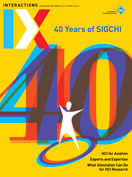Authors:
Sharon Bautista
"Everything is born from our mind, from our way of looking." These words may sound like they come from a designerly text on managing bias, but they are from the teachings of Thich Nhat Hanh, the Vietnamese Zen monk, teacher, and activist who passed away at the start of this year at the age of 95. Thich Nhat Hanh engaged with the world at national and global levels, for example, speaking out against war and the negative effects of the Information Age. He is equally known for his "micro" teachings on mindfulness for individuals and small communities. I found his writing as I emerged from the first two years of Covid-19 isolation, wondering whether I could remember how to interact with the world.
Plum Village, Thich Nhat Hanh's community of meditation centers and monasteries, started publishing a series of playfully illustrated, pocket-size editions of his most popular teachings about a decade ago. Over the past few months I have read five in the Mindfulness Essentials series, which continues to expand:
- How to Connect covers how to cultivate relationships with one's inner self, the earth, other people and communities, and the broader world.
- How to Fight describes ways of addressing anger, conflict, reconciliation, and healing.

- How to Love advances the idea of love as a living thing and perpetual practice centered in joy, within oneself and facilitated for others.
- How to See delineates different types of misperception and offers considerations for how to manage and live beyond related biases.
- How to Walk presents the physical act of walking in a range of environments, for various distances, and during different times of day, alone and with others, as a medium for mindfulness.
Self-help and self-care are big business, and even though Thich Nhat Hahn's books are put out by a nonprofit publisher, it would not be without reason to group the above titles with glossier, heavily marketed books that pander to the capitalist demand for more ways to slow down, rest, focus, and so on.
The unique value that Thich Nhat Hahn presents to HCI professionals is threefold. First, he describes exercises for cultivating skills invaluable in our roles, such as active listening and truth-telling. For example, in How to Fight, he encourages us to assemble a "council of sages" so that we can build the capacity for listening deeply to people who are typically not heard or seen. Second, he repeatedly highlights the concepts of equanimity and interbeing in an age when there is much in our workplaces and beyond that merits outrage and pits groups of people against one another. The challenge of trying to understand how those concepts might coexist with or even supersede design's fixations on empathy and user groups that are just like us is an important one. Finally, there is a degree of asceticism in Thich Nhat Hahn's ways. He never mentions social media diets or productivity timers or assumes that his readers have any amount of disposable income. His focus is on mindfulness as a lifelong practice and on humility, not mastery.
Sharon Bautista is research director at global experience innovation firm Designit. She previously led research and design teams in the technology and financial services industries as well as for various consultancies. She is the principal organizer of the UX Book Club of Chicago and a certified yoga teacher. [email protected]
Copyright held by author
The Digital Library is published by the Association for Computing Machinery. Copyright © 2022 ACM, Inc.








Post Comment
No Comments Found